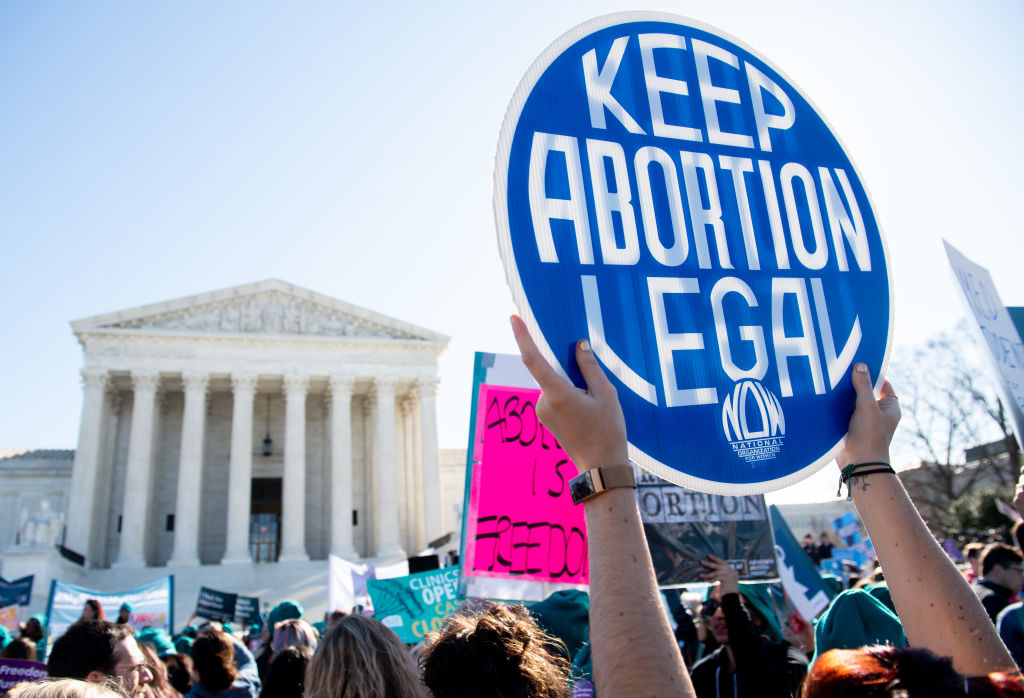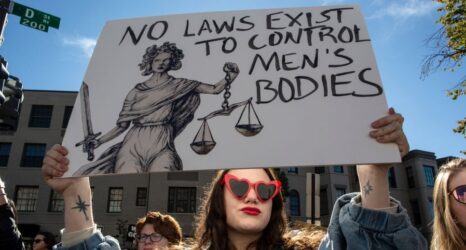Historians have a special obligation to challenge the Supreme Court’s narrow view of the history of abortion in the U.S.

When I recently asked students in my introductory gender and sexuality studies course how long they thought abortions have been practiced in American history, one earnestly volunteered, “The 1950s.” My student is in good company. It’s been five months since Justice Samuel Alito released the majority opinion in Dobbs v. Jackson Women’s Health Organization, in which he argued that Roe v. Wade (1973) was not only “egregiously wrong,” but was a historical aberration. The right to an abortion, he claimed, “is not deeply rooted in the Nation’s history and traditions.”
Yet nearly two decades of studying and teaching the history of women, gender and sexuality in America has taught me that Alito’s analysis ignores the long, complex and disparate experiences of women in this nation. Studying the history of marginalized people has always been a political project, but in the last year, it’s felt more political than ever. As some elected officials have banned teachers from discussing “divisive concepts” in the K-12 classroom, historians have a special obligation to challenge the Supreme Court’s narrow view of this history.
Indeed, the long history of abortion is so well-documented that even a cursory study reveals that this history is anything but brief. Humans have been trying to control if, how and when they give birth for literally thousands of years, and Americans are no exception. Even if we only begin our search for the history of abortion after the American Revolution, we readily find evidence that disputes Alito’s claim.
Despite the widely held assumption that women in the 18th and 19th centuries had no options when it came to controlling their fertility, in fact, they regularly turned to kitchen gardens, pharmacies, midwives and home medicinal guides in their efforts to control their pregnancies. Books on household medicine warned women that vigorous exercise such as horseback riding, jumping rope or dancing could harm a pregnancy, while ingesting certain herbs and minerals could “restore menstruation” and expel “internal parasites.”
Humans have been trying to control if, how and when they give birth for literally thousands of years, and Americans are no exception.
Until criminalization, early abortions were legal under common law. Early abortions were generally defined as those occurring before quickening, the point at which a pregnant person could feel a fetus move, approximately three to four months, but sometimes longer. Neither a physician nor a midwife could make this determination; only the pregnant person could say at which point quickening occurred.
Abortion only became a crime through an uneven state-by-state process—and not all states criminalized abortions until 1880, approximately a century after our nation’s founding. Historians who study abortion have examined the motivations and methods behind the criminalization of abortion in the late 19th century, arguing that these efforts reveal an attempt to enforce white supremacist ideologies and gender and sexual norms, especially upon working class single women who were more vulnerable to state surveillance. In criminalizing abortion, men sought to reinforce white middle-class women’s obligation to marry and bear children within the heterosexual institution of marriage.
Thus, if we begin with the drafting of the Constitution in 1787, abortion was not a crime for nearly 60 percent of American history. If we include the colonial period when American culture and legal traditions were already developing, it’s much longer. In fact, if there is an aberration in the history of abortion in America, it is those nine decades of criminalization between 1880 and 1973.
One of the most influential forces behind the criminalization of abortion was the American Medical Association (AMA). The AMA was founded in 1847 and played a leading role in criminalizing abortion starting in the 1850s, as physicians like Horatio Storer simultaneously sought to solidify their own professional power and revoke competition from midwives. (The AMA would not reverse its position on abortion until 1970, though this June the AMA referred to its “longtime opposition to the criminalization of medical practice,” without acknowledging the AMA’s role in the criminalization of abortion in the 19th century.)
Even after abortion was criminalized, research shows that women who sought them were rarely arrested or prosecuted because many people accepted abortion as a part of life, regardless of what the law said. “Dissident doctors” continued to provide abortions not only when the mother’s life was at risk, but at their own discretion for “therapeutic” reasons.
In When Abortion Was a Crime, Leslie Reagan demonstrates that, from the point when states began to criminalize and prosecute abortions until approximately the 1930s, prosecutors generally only sought to punish “abortionists” rather than people who obtained abortions. She argues that coroner’s reports show that prosecutors only did so in cases where women died after being forced to provide “dying declarations” against their abortion providers. In such cases, male prosecutors typically went after female midwives, but even then, juries often refused to convict. John D’Emilio and Estelle Freedman have shown that out of 32 trials in Massachusetts, the home state of anti-abortion activist Horatio Storer, not one prosecution resulted in a conviction between 1849 and 1857.
In response to increasing pressure from disparate groups, multiple states had already decriminalized abortion before Roe v. Wade. In the wake of Roe, however, anti-abortion activists and members of the “Moral Majority” stepped up campaigns to portray women who sought abortions as selfish, promiscuous and anti-family—even as they ignored sterilization abuses of women of color and high Black infant and maternal mortality rates.
The recent ruling in Dobbs reveals a similar subtext and a collective anxiety about reinstating stable gender norms. Legislative efforts to censor history teachers, regulate trans bodies and ban books about LGBTQ issues serve as only the most vivid examples of this larger effort.
Having honest conversations about our nation’s history in and outside the classroom is as urgent as ever. Despite Alito’s protestations, abortion has been and will continue to be an integral part of our nation’s past, present and future. In fact, the only way in which abortion appears to be an aberration in our history is if women are left on the sidelines. A closer look at American women’s past and present—where one in four women obtain an abortion by the age of 45—illustrates that abortion has deep roots, which began centuries before Roe v. Wade and will continue long after Dobbs v. Jackson Women’s Health Organization.
Up next:
U.S. democracy is at a dangerous inflection point—from the demise of abortion rights, to a lack of pay equity and parental leave, to skyrocketing maternal mortality, and attacks on trans health. Left unchecked, these crises will lead to wider gaps in political participation and representation. For 50 years, Ms. has been forging feminist journalism—reporting, rebelling and truth-telling from the front-lines, championing the Equal Rights Amendment, and centering the stories of those most impacted. With all that’s at stake for equality, we are redoubling our commitment for the next 50 years. In turn, we need your help, Support Ms. today with a donation—any amount that is meaningful to you. For as little as $5 each month, you’ll receive the print magazine along with our e-newsletters, action alerts, and invitations to Ms. Studios events and podcasts. We are grateful for your loyalty and ferocity.





